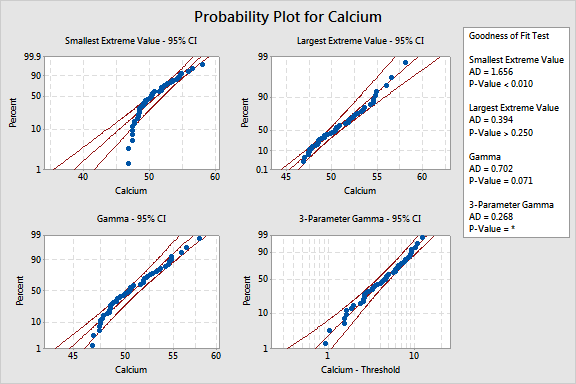|
|
Individual Distribution IdentificationGraphs - Distribution ID Plots: Smallest Extreme Value, Largest Extreme Value, Gamma, and 3-Parameter Gamma |
Use the probability plots to compare the fit of all distributions so you can choose the best-fitting distribution.
Example Output |

Interpretation |
The probability plots for the largest extreme value (AD = 0.394, P-Value > 0.250) and gamma (AD = 0.702, P-Value = 0.071) distributions show that the points fall close to the middle line and within the confidence interval suggesting that the distributions fit the calcium data well.
For the 3-parameter gamma distribution, there is no established method for calculating the p-value. In these cases, it is advisable to first examine the p-value for the corresponding two-parameter distribution (0.071) which indicates a good fit. Then look at the LRT P for the 3-parameter gamma distribution (from the goodness-of-fit tests, 0.004) which indicates that the three-parameter distribution is significantly better than the two-parameter distribution. Additionally, a visual inspection of the probability plot combined with the AD value (0.268) suggests that this distribution is a good fit. However, it may be advisable to choose a distribution which has a calculated p-value and a similar AD value.
The probability plot, Anderson-Darling statistic, and p-value for the smallest extreme value distribution suggest that this distribution does not fit the calcium data well.